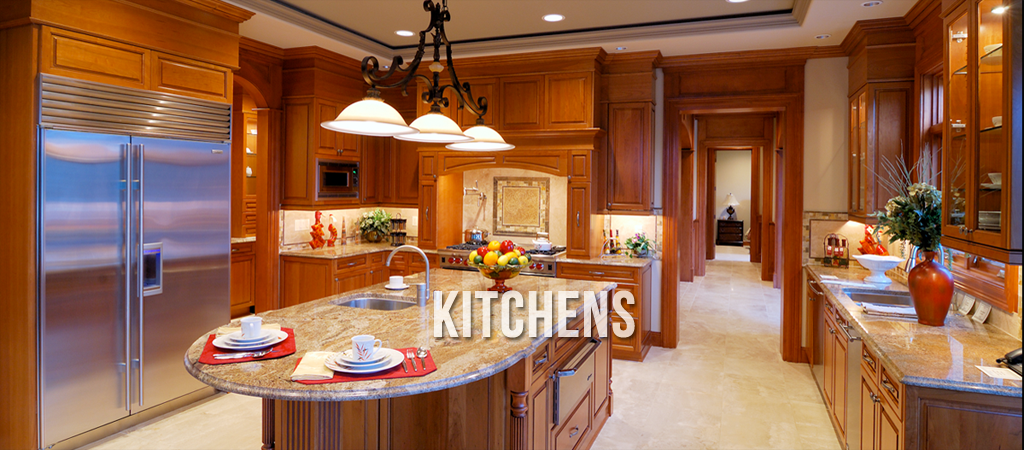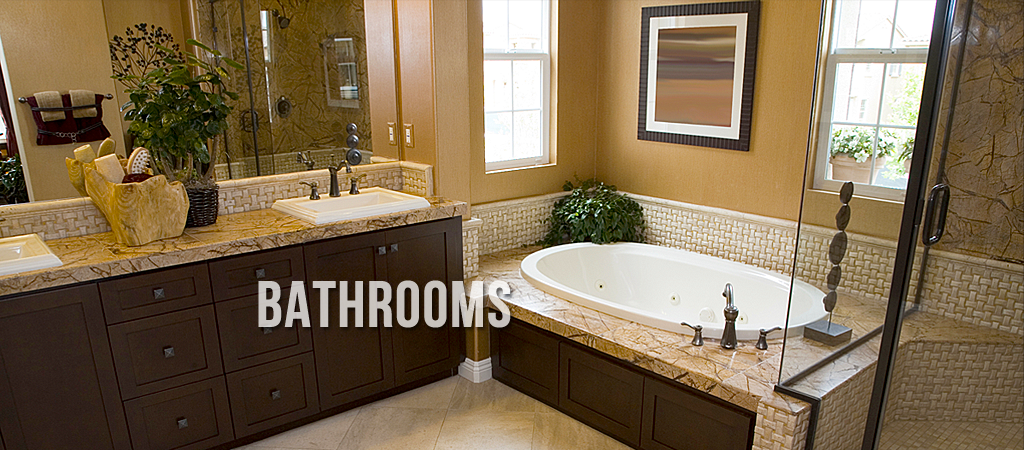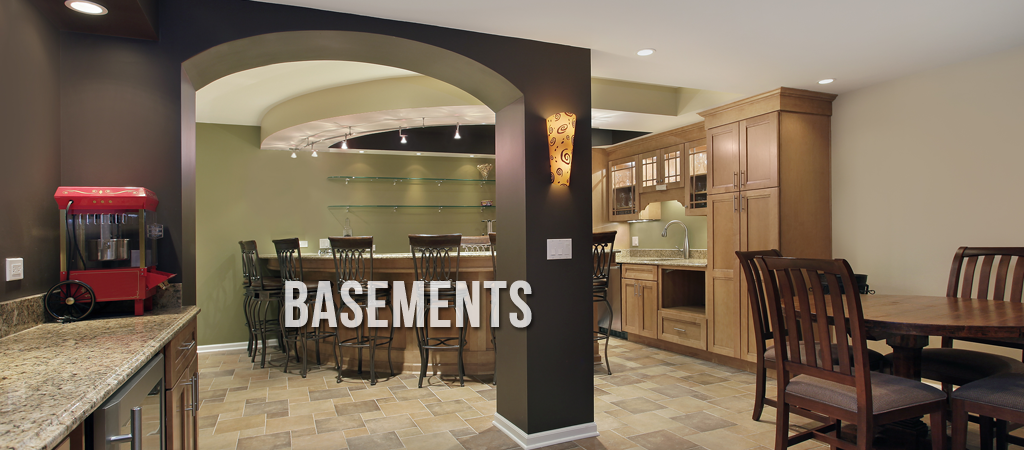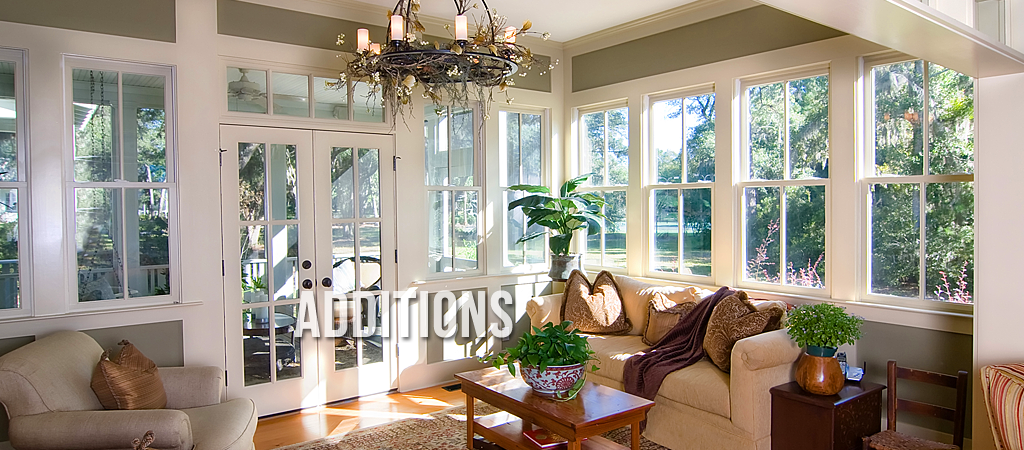To create a bright and functional basement space, you need to address the unique challenges it presents. Start by maximizing natural light with egress windows, reflective surfaces, and light tubes or sun tunnels. For artificial lighting, use a layered approach combining ambient, task, and accent lights. Recessed lighting and LED bulbs are ideal for low ceilings and moisture-prone areas, while floor and table lamps offer versatility. Incorporate smart lighting systems for adjustability and energy efficiency. Choose light-colored furnishings and an open layout to enhance brightness. By considering these factors, you can transform your basement into a well-lit, inviting space, and there’s more to explore to make it perfect.
Basement Lighting and Design Tips for a Bright Space

To create a bright and functional basement space, you need to understand the unique challenges posed by limited natural light and low ceilings. You can transform your basement by using a combination of ambient, task, and accent lighting, such as recessed lights for even illumination, surface-mounted lights for directed light, and wall sconces for added style and versatility.
When selecting fixtures, opt for recessed lights, which are ideal for low ceilings, and consider pendant lights or track lighting to highlight specific areas like a pool table or artwork.
Effective techniques include layering your lights, using dimmer switches for adaptability, and incorporating reflective surfaces and cool light temperatures to enhance brightness and ambiance.
Understanding the Challenges of Basement Lighting and Design
When designing your basement, you need to address the limited natural light, often due to high-set windows or the absence of them altogether. Managing low ceilings requires space-saving fixtures like recessed lights, which tuck into the ceiling and don’t protrude, making the space feel less cramped. To combat dark finishes and moisture issues, choose lighting that is compatible with the basement’s conditions, such as energy-efficient LEDs and smart lighting systems that can adapt to different environments.
Addressing Limited Natural Light and High-set Windows
Addressing the limited natural light and high-set windows in your basement is essential for creating a bright and inviting space. Here are some strategies to help you achieve this:
- Install basement windows or egress windows to let in natural light, especially if your basement is partially or fully underground.
- Use mirrors and reflective surfaces to amplify and distribute the available natural light around the room.
- Consider light tubes or sun tunnels that capture sunlight from the roof and channel it into your basement.
- Opt for light-colored paints and flooring to enhance the reflection of both natural and artificial light, making the space feel brighter and more open.
Managing Low Ceilings with Space-saving Fixtures
Managing low ceilings in your basement requires careful selection of lighting fixtures that maximize space without compromising on illumination. Here are some space-saving options:
- Recessed Lighting: Installed directly into the ceiling, these lights don’t take up headroom and provide even, ambient illumination.
- Track Lighting: Adjustable and versatile, track lights can highlight specific areas without intruding on limited space.
- Flush-Mount Fixtures: These lights are affixed directly to the ceiling, providing ambient light without taking up headroom.
- Layered Lighting: Combining ambient, task, and accent lights to guarantee thorough and adaptable illumination.
Combating Dark Finishes and Moisture Issues with Compatible Lighting
To combat the challenges posed by dark finishes and moisture issues in your basement, it is crucial to select lighting fixtures that not only brighten the space but also withstand the unique conditions.
- Recessed Lighting: Ideal for low ceilings, recessed lights provide even illumination without occupying space.
- Task Lighting: Focuses light where needed, reducing shadows and enhancing functionality.
- Light Wells: Mimic natural light by installing false windows or light wells to create an illusion of daylight.
- Energy Efficiency: Use LED lights for their durability and energy efficiency, especially in moist environments.
Types of Lighting to Transform Your Basement
To transform your basement into a bright and functional space, you need to understand and implement the right types of lighting. Ambient lighting sets the overall tone, task lighting focuses on specific activities, and accent lighting adds depth and style. By combining these elements, you can create a versatile and inviting basement.
- Ambient Lighting: Uses recessed lights, ceiling lights, or tray lights to fill the room with general illumination, making it safe and usable.
- Task Lighting: Employes fixtures like pendant lights, table lamps, or under-counter lights to provide focused light for activities such as reading, cooking, or playing games.
- Accent Lighting: Utilizes wall sconces, track lighting, or staircase runway lights to highlight special features, artwork, or architectural details, enhancing the aesthetic appeal of the space.
- Amplifying Natural Light: Incorporates innovative solutions like minimal window treatments and reflective surfaces to maximize the use of any available natural light.
Ambient Lighting for Overall Brightness
Ambient lighting is the backbone of your basement’s illumination, ensuring the space is usable and safe by filling shadows and eliminating dark corners.
To achieve effective ambient lighting:
- Use recessed can lights or flush-mount fixtures, spacing them evenly across the ceiling.
- Install LED panels for consistent and energy-efficient brightness.
- Incorporate dimmer switches to adjust the light levels according to your needs.
- Consider tray lighting or cove lighting to diffuse light and make the ceiling feel taller.
Task Lighting for Specific Activities and Workspaces
When designing your basement, task lighting plays an essential role in illuminating specific areas where activities take place, such as reading, cooking, or playing games. Here’s how you can implement task lighting effectively:
| Task Lighting Type | Best For | Benefits |
|---|---|---|
| Table Lamps | Reading, homework | Flexible, easy to move |
| Under-Cabinet Lighting | Kitchen counters | Reduces shadows, enhances visibility |
| Pendant Lights | Pool tables, bars | Focused light, stylish design |
| LED Strip Lights | Workstations, game areas | Energy-efficient, adjustable brightness |
In multi-purpose spaces, smart lighting systems can be integrated to adjust brightness and color temperature according to the activity, making your basement highly functional and adaptable.
Accent Lighting for Added Depth and Style
Accent lighting is a powerful tool for adding depth and style to your basement, transforming it into a visually appealing and inviting space. Here are some ways to effectively use accent lighting:
- Highlight artwork or architectural features with focused lights.
- Use cool light temperatures to create a crisp, energizing ambiance.
- Avoid common lighting mistakes like over- or under-lighting areas.
- Employ dimmer switches to adjust the intensity and mood of the space.
Amplifying Natural Light with Innovative Solutions
To maximize the limited natural light in your basement, it’s crucial to integrate innovative lighting solutions that complement and enhance the existing light. Here are some strategies to contemplate:
| Solution | Description | Benefits |
|---|---|---|
| Egress Windows | Install larger windows to let in more daylight. | Enhances natural light, meets building codes. |
| Sun Tunnels | Use reflective tubes to bring sunlight from the roof. | Saves energy, adds natural light to deep areas. |
| Mirrors and Reflective Surfaces | Place mirrors and glossy surfaces to reflect available light. | Expands the perception of natural light, brightens the space. |
| Open Floor Plans | Design the basement with open areas to distribute natural light. | Makes the space feel larger and more inviting. |
These solutions can notably brighten your basement and improve its overall basement design.
Best Fixtures for Basement Illumination
When designing your basement’s lighting, consider recessed lighting as an ideal solution for low ceilings, as it provides even illumination without taking up headroom. Track lighting can add style and functionality by highlighting specific areas, such as artwork or architectural features. For energy efficiency and versatility, incorporate LED panels, and complement these with floor and table lamps to create a layered lighting effect that suits various activities and moods.
Why Recessed Lighting is Ideal for Low Ceilings
In a basement with low ceilings, recessed lighting stands out as a superior choice for several compelling reasons. It tucks neatly into the ceiling, preserving headroom and avoiding the bulk of other fixtures. Recessed lights provide even, ambient illumination and can be dimmed to adjust the mood. They are ideal for basements with 8-foot or lower ceilings, as they do not take up valuable space[3][4][5].
Adding Style with Track Lighting
Adding style with track lighting can considerably enhance the aesthetic and functionality of your basement. This versatile option allows you to direct light precisely where needed, highlighting specific areas such as artwork, architectural features, or task zones.
| Track Lighting Benefits | Installation Tips | Design Considerations |
|---|---|---|
| Adjustable light direction | Plan the layout carefully | Match with room decor |
| Highlights key areas | Use LED bulbs for energy | Consider color temperature |
| Enhances ambiance | Install near task areas | Balance with other lights |
Track lighting is ideal for basements, offering flexibility and style.
Achieving Energy Efficiency with LED Panels
Achieving energy efficiency in your basement is essential, especially given the limited natural light and often darker environments. Consider installing LED panels, which are energy-efficient and last longer than traditional bulbs. LED panels can be used for recessed lighting, surface-mounted fixtures, or even as part of your ambient lighting design. They reduce long-term electricity costs and provide flexible brightness options with dimmer switches[1][3][4].
Flexible Lighting Options with Floor and Table Lamps
When illuminating your basement, floor and table lamps offer a versatile and flexible lighting solution, especially in spaces with limited ceiling height or where permanent installations are not feasible.
- Ambient and Task Lighting: Floor lamps provide broad, ambient light, while table lamps are ideal for task and accent lighting.
- Easy Setup and Portability: These lamps require minimal setup and can be easily moved to different areas.
- Customizable Brightness: Many contemporary lamps offer extensive brightness and color tone options.
- Smart Control Solutions: Use smart plugs to control lamps with a wall switch if switched outlets are not installed.
Effective Lighting Techniques for a Bright Basement
To create a bright and functional basement, consider combining layered lighting to balance ambient, task, and accent lights. This approach guarantees every area is well-illuminated and visually appealing. Additionally, using reflective surfaces, such as mirrored walls in light wells, can maximize brightness by distributing natural and artificial light more evenly, while cool light temperatures and dimmer switches offer flexibility and energy efficiency[2][4][5].
Combining Layered Lighting for Balance and Functionality
Combining layered lighting is essential for creating a balanced and functional basement space. This approach guarantees that every area is well-illuminated and visually appealing.
- Ambient Lighting: Use recessed lights or tray lights to provide general illumination and create a cozy atmosphere.
- Task Lighting: Install pendants or under-cabinet lights to focus light on specific areas like pool tables, bars, or workstations.
- Accent Lighting: Employ wall sconces or track lights to highlight architectural features, artwork, or special decorative elements.
- Portable Lighting: Incorporate floor and table lamps for flexibility and additional light where needed.
Using Reflective Surfaces to Maximize Brightness
To maximize brightness in your basement, leverage reflective surfaces to amplify the light already present. Use light-colored paint on walls and ceilings to reflect light, making the space feel larger and brighter. Incorporate reflective materials like mirrors, glossy finishes, or metallic accents to bounce light around the room, enhancing the overall illumination and creating a more inviting atmosphere.
Benefits of Cool Light Temperatures and Dimmer Switches
When designing your basement’s lighting, incorporating cool light temperatures and dimmer switches can greatly enhance the space’s ambiance and functionality. Cool light temperatures, often in the 3500-5000K range, create a crisp and energizing environment, ideal for task areas. Dimmer switches allow you to adjust the lighting intensity, tailoring it to different activities and moods, and can also help save energy by reducing unnecessary brightness[2][4][5].
Bright and Functional Design Tips for Your Basement
To create a bright and functional basement, start by selecting a light color scheme that reflects and amplifies any available light. Implementing an open floor plan can also help distribute light more evenly throughout the space, making it feel larger and more inviting. Choose furnishings and decor that are light in color and texture, and maximize natural light by installing larger windows or light wells where possible[2][4][5].
Creating Light Color Schemes to Enhance Space
Creating an effective light color scheme for your basement involves carefully considering the intended use and ambiance of the space.
- Warm White (2700K-3000K): Ideal for creating a cozy atmosphere, perfect for recreational or living areas.
- Cool White (4000K-5000K): Better for task lighting, suitable for workspaces or areas requiring bright, vibrant light.
- Bright White (3000K): A balanced option, providing warmth without feeling institutional, great for versatile spaces.
- Dimmable LEDs: Allow you to adjust the brightness and color temperature, enhancing flexibility and energy efficiency.
Implementing Open Floor Plans for Better Light Flow
Implementing an open floor plan in your basement can greatly enhance light flow and overall ambiance. By removing walls and creating a more spacious area, natural and artificial light can spread more evenly. This design allows recessed lights, sconces, and table lamps to illuminate the space more effectively, reducing shadows and making the area feel brighter and more inviting[2][3][5].
Choosing the Right Furnishings and Decor for Added Lightness
After optimizing your basement’s layout with an open floor plan to enhance light flow, the next step is to select furnishings and decor that amplify the brightness and functionality of the space. Choose light-colored paints, reflective surfaces, and minimalist furniture to make the area feel larger and brighter. Incorporate mirrors and glossy finishes to bounce light around the room, creating a more inviting and illuminated space.
Maximizing Natural Light Through Windows and Light Wells
When maximizing natural light in your basement, utilizing windows and light wells is essential, especially given the inherent lack of natural illumination in these areas. If your basement has windows, keep window treatments minimal to allow as much natural light as possible to enter. Light wells can also be installed to bring in more natural light, making the space feel brighter and more inviting[5].
Value-Boosting Features for a Modern Basement
To enhance your basement’s value and functionality, consider implementing multi-purpose lighting that adapts to various activities. Emphasizing energy efficiency with LEDs and smart lighting systems not only reduces your energy costs but also adds a touch of luxury appeal. By incorporating smart lighting, you can create a versatile space that adjusts to different moods and tasks, making your basement a highly desirable area of your home.
Multi-Purpose Lighting for Versatile Spaces
In basements, where natural light is often scarce, multi-purpose lighting is essential for creating versatile and functional spaces. To achieve this, consider the following:
- Recessed Lighting: Ideal for low ceilings, providing even illumination without taking up headroom.
- Layered Lighting: Combine ambient, task, and accent lights to cater to different activities and moods.
- Dimmer Switches: Enhance flexibility and energy efficiency by adjusting light intensity.
- Smart Lighting: Utilize smart bulbs and Wi-Fi lighting to control lights remotely and optimize energy use.
Emphasizing Energy Efficiency with LEDs and Smart Systems
Embracing energy efficiency in your basement lighting design is a savvy move that enhances both the functionality and the value of your space. Opt for LED lights, which are highly energy-efficient, last longer, and consume less electricity than traditional incandescent bulbs. Consider smart lighting systems with motion sensors and dimmer switches to optimize energy usage and create a versatile, modern basement environment.
Incorporating Smart Lighting for Luxury Appeal
Incorporating smart lighting into your basement design can considerably elevate the luxury appeal and functionality of your space. Smart light bulbs allow you to adjust color temperature and brightness via an app or voice commands. Set up scenes like “TV Time” or “Game Night” for one-touch adjustments. Smart switches and dimmers, along with motion sensors, guarantee you never enter a dark space, enhancing both convenience and ambiance.
Avoid These Common Basement Lighting Mistakes
When designing your basement’s lighting, it’s essential to avoid common mistakes that can drastically impact the functionality and aesthetics of the space. Skipping layered lighting solutions can leave your basement either too dim or overly harsh, as combining ambient, task, and accent lights is vital for balanced illumination. Using the wrong color temperature can also misalign with the desired ambiance, and overcomplicating the design with too many or overly complex fixtures can make the space feel cluttered and less functional.
Skipping Layered Lighting Solutions
Skipping layered lighting solutions is a common mistake that can leave your basement feeling dull and inadequately illuminated. To avoid this, combine ambient, task, and accent lighting. Ambient lighting, such as recessed lights, provides overall illumination. Task lighting, like table lamps, focuses on specific areas. Accent lighting, such as sconces or track lights, highlights special features, ensuring a well-lit and visually appealing space.
Using the Wrong Color Temperature for a Bright Effect
Using the wrong color temperature in your basement lighting can greatly impact the ambiance and functionality of the space. Opt for cooler temperatures (4000K-5000K) for task lighting and brighter areas, while warm temperatures (2700K-3000K) create a cozy atmosphere. Ensuring consistent color temperatures throughout the space avoids awkward contrasts and enhances the overall lighting effect.
Overcomplicating the Design: Keeping Fixtures Simple and Functional

To avoid overcomplicating your basement lighting design, it is crucial to keep fixtures simple and functional. Opt for recessed lights, surface-mounted fixtures, and wall sconces that blend seamlessly into your space. Avoid bulky or elaborate lights that can make low ceilings feel even lower. Instead, use layered lighting – combining ambient, task, and accent lights – to create a balanced and versatile illumination plan.




